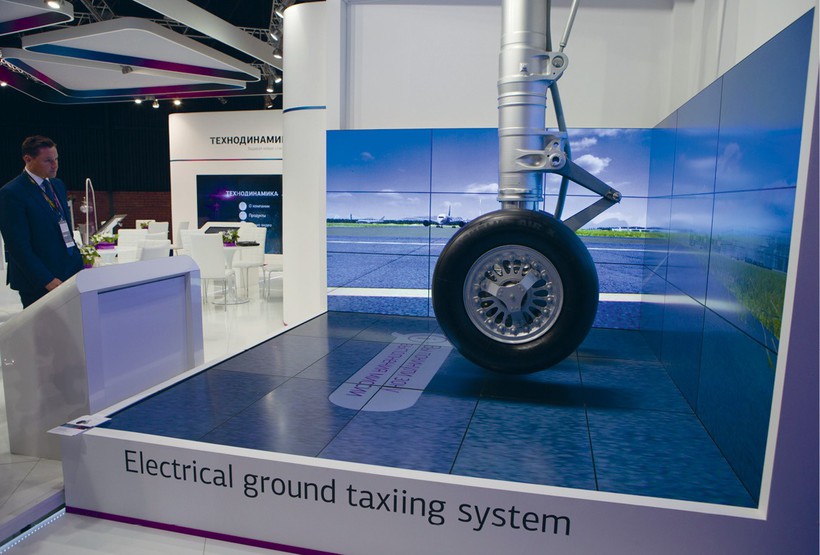Rostec: Reloading
Timofey Tikhomirov
Rostec’s restructuring program, which launched last year, should transform the state corporation into a modern market company that meets the highest international standards of corporate governance and will be as effective as leading global defense and technology groups.
Almost from the first day of its existence, the state corporation Russian Technologies, founded in 2007 with the aim of supporting the development, production, and export of high-tech, industrial civil and military products, has been the target of public criticism. Much of the negative rhetoric directed at the corporation was focused on its bulky and non-transparent structure and, as a consequence, its low efficiency, a factor that was especially apparent compared to leading defense and technology conglomerates with similar business structures. For example, in 2014, the revenue per employee of US United Technologies Corporation (UTC) and Boeing amounted to nearly $550,000 and $310,000 respectively; by comparison, the same figure for Russian Technologies – which had about 700 large industrial enterprises overall with a total workforce of over half a million people – was 1.3 million rubles (only $23,000, according to the official exchange rate at the end of last December).
While it is difficult to argue with statistics, these results are in fact a direct consequence of the first development phase of the state-owned corporation, which had to spend several years trying to collect, sanitize, and return the dozens of disparate defense and industrial enterprises it inherited to normal operation; of these holdings, one-third were in a critical or pre-bankruptcy state. But this phase is in the past. The launch of a major reform of the state-owned corporation was announced in early 2014, and a new name – Rostec – and a new logo come with it. At the same time, a new development strategy through 2020 was adopted, which, among other things, is supposed to restructure the company to improve its management and efficiency to approach the level of its global competitors and ultimately lead to a proportional increase of its capitalization and revenue.
To that end, Rostec is reorganized in accordance with the development corporation business model, the structure of which is built around 15 holding companies based on type of activity, some of which can later be brought to the stock exchange. The corporation’s headquarters will take over the function of strategic planning and control, which also corresponds with the model of industry leaders. As a result, Rostec’s revenue is expected to exceed 2.1 trillion rubles (over $31.5 billion at the current exchange rate) within five years, and the output per employee will double to 4 million rubles ($60,000).
One of the program’s most important measures will be downsizing the administrative apparatus, which accounted for 85,000 people at the beginning of the reform. This number translated to 18% of the corporation’s total number of employees, a figure much higher than its Western competitors’ 5-10 %. By the end of next year, the number of Rostec managers will be cut by half, which should improve the manageability, speed, and flexibility of decision-making. In an interview with BRICS Business Magazine, Director of Organizational Development of Rostec, Anna Sharipova, discusses the corporation’s personnel policy goals, the criteria upon which its management team will be assessed, and why optimization should not adversely affect operating results.

Rostec is reorganized in accordance with the development corporation business model, the structure of which is built around 15 holding companies based on type of activity, some of which can later be brought to the stock exchange. The corporation’s headquarters will take over the function of strategic planning and control. As a result, Rostec revenue is expected to exceed 2.1 trillion rubles (over $31.5 billion at the current exchange rate) within five years, and the output per employee will double to 4 million rubles ($60,000)
First of all, let us define some terms. What should we call the processes that are now taking place at Rostec? Is it downsizing or optimization?
Downsizing is when the employment termination process is paramount. This can be done when the objective is to reduce the number of employees by 10-20%. Each leader is quite capable of determining how to carry out such a reduction. If we are talking about more serious goals for reducing numbers, it’s crucial that an analysis of key processes and functions be conducted; in general, there should be a critical examination of the existing management model. Thus, we face a process of optimization. This is a complex task, aimed at increasing work efficiency and the most rational construction of functions and processes.
Why was it necessary to carry out such complex changes during the crisis?
Only companies that are ready to quickly change and adapt to new circumstances can remain stable in an unstable economic and political situation. Rostec is evolving and becoming more aware of itself as a market participant that lives by the rules of efficiency and competitiveness. This means that the corporation must go through a renewal of its strategy, restructure managerial decision-making processes, including human resources, and change motivation systems.
What is the end result?
The end result of optimization should be a compact corporate center that can quickly make effective strategic and operational decisions, as well as respond to a rapidly changing situation.

One of the program’s most important measures will be downsizing the administrative apparatus, which accounted for 85,000 people at the beginning of the reform. This number translated to 18% of the corporation’s total number of employees. By the end of next year, the number of Rostec managers will be cut by half
How is the optimization work organized? Is it already deployed in holdings or does it only concern the headquarters?
We decided to start with ourselves – that is, with Rostec’s headquarters. With it, we’ve set an example for our holdings and shown them that we are in the same boat as they are; there are no exceptions for anybody.
This fall, we have to defend the optimization program of our holdings in front of the supervisory board. To do this, we, together with their managers, will carry out the preparatory analytical work.
The effectiveness of the processes directly depends on the work quality and productivity of the administrative body. How are you going to separate effective from ineffective managers?
Clear performance criteria and mechanisms to control these parameters are now being actively implemented at Rostec. This is a complex project, which includes a result-stimulating motivation system, sound business planning, managers’ feedback skills, and ability to agree with employees about goals.
How much time is necessary for this?
The setup and implementation of the performance management system will take several years, and as it develops, we will be able to evaluate employees’ effectiveness much more objectively. Therefore, now the optimization emphasis has shifted to the analysis of key processes. We eliminate redundancy, improve the decision-making system, and optimize the superfluous hierarchical branches. All of this is aimed at simplifying and improving transparency.
The special status of Rostec as a state-owned corporation brings well-known specifics to its work. Are standard restructuring approaches used in the private sector applicable in your case?
Indeed, the status of a state corporation suggests a certain specificity of work uncharacteristic to private business. For example, we fall under legal regulation in the state procurement field. We are obligated to promptly respond to all appeals of citizens. We are presented with strict requirements for the regulation of all key processes. All of this complicates our structure and functions. In addition, the need for constant interaction with the state as our major shareholder, in the face of executive bodies, adds an additional and significant burden in terms of paperwork, which is unusual for private business.
However, this is no reason not to work on increasing efficiency. With regards to Rostec’s individual holding companies and their key production and management processes, they are comparable with international and Russian counterparts. We have an understanding of the organizational structuring standards of industrial companies, and we will systematically implement them.
Have you studied the experience of leading companies?
Yes, of course. We also are launching research into our own best practices in order to then scale them across the entire perimeter of our corporation. For example, KAMAZ has already implemented modern tools for lean manufacturing; a lean-academy has been created. The Technodynamika holding created an advanced design center, where the best international standards in this area are used. The Kalashnikov enterprise has launched an ambitious production system development program through 2020 that aims to increase productivity fourfold, reduce production costs by half, and significantly accelerate new product development and launch. All of these are important transformational projects that significantly affect Rostec’s human capital development.
How will Rostec headquarters’ work change as a result of the optimization?
We are striving to achieve three key changes: Firstly, management will be strengthened. We are introducing the role of industrial directors. These leaders will be responsible for the implementation of state defense orders and federal target programs of Russian defense industry development until 2020; expansion of markets and new directions for our holdings; and setting realistic and challenging targets. In general, it can be said that industrial directors will be responsible for the growth of shareholder value and the investment attractiveness of our holdings and organizations.
Secondly, the size of the central apparatus will be reduced substantially. This should lead to a change in our managerial culture: fewer superiors, less bureaucracy, less function duplication. Optimization has given us the opportunity to analyze and recognize our personnel’s potential, and now our task is to turn it into Rostec’s capital.
And thirdly, transparency. Through a deep analysis of processes, functions, and conducted personnel assessment, we now understand our strengths and areas for better development. We can now confidently implement the necessary changes.
In addition to organizational analyses, have you conducted headquarters’ employee certification? On what basis will staffing decisions be made?
We evaluated employees to see the human capacity of the headquarters and help managers in making final decisions. Everybody went through the certification, including the employees working for the CEO. All mid-level managers were assessed by their superiors on their capability and efficiency. They also went through skills evaluation – analytical, logical, verbal.
Did the leaders of the company also go through this process?
As for key executives, the format of the evaluation was much more difficult. Top managers worked on business cases and went through biographical interviews, as well as interviews based on key managerial competencies.
Are there fears that such serious downsizing may significantly affect the operations of the group’s companies?
It is important to understand that Rostec created a matrix of departmental reorganization to ensure that rotation and reduction could take place without harming the enterprises. It takes into account both the value of each employee and the usefulness of the whole unit. In addition, as I said, we approached the optimization process in a complex manner.
In addition to staff recommendations, we are planning the allocation of service centers for accounting and personnel administration and the creation of a common treasury, which will lead to a common standard of security and audit systems. Of course, nobody will be fired unless there is assurance that the function of the position is redistributed.
Are you afraid that such a radical reform may lead to well-known destabilization of the company?
Paradoxically, but it is the willingness to change that is key to the company’s stability in the long term. It is not always easy to change established patterns of behavior and patterns of intra-corporate interaction. However, flexible companies that are ready to react promptly to the current challenges of the market will be able to feel stable, regardless of the macroeconomic environment.











